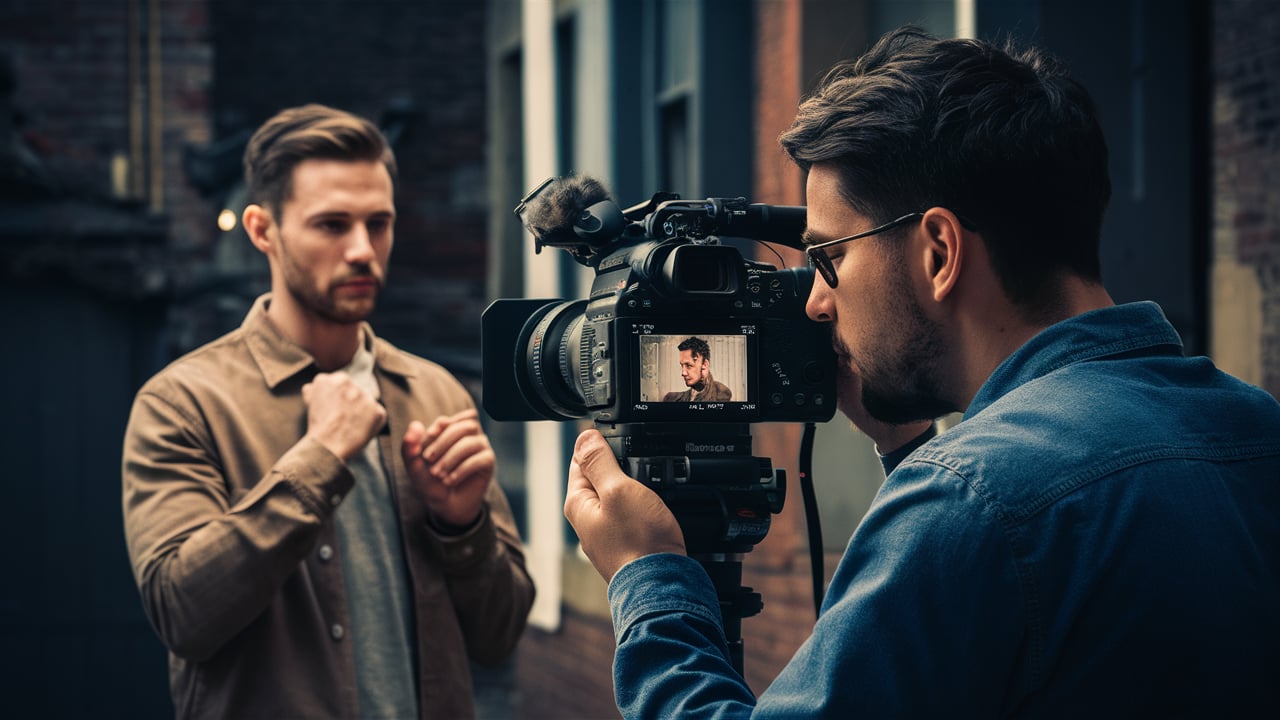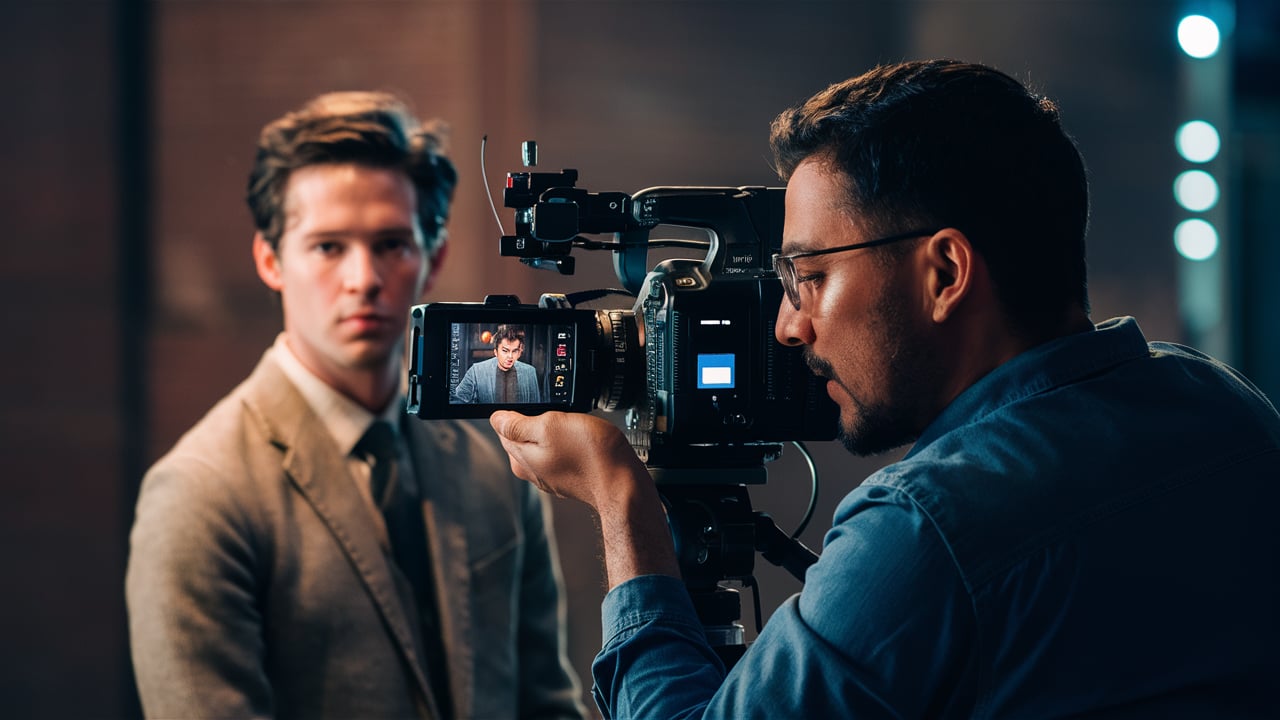Depth in cinematography refers to the illusion of three-dimensional space within a two-dimensional frame. Creating a sense of depth enhances visual storytelling, adds realism, and guides the viewer’s attention. This article explores various types of shots and techniques that cinematographers use to create depth in their compositions.
Understanding Depth in Cinema.
Before delving into specific shots, it’s important to understand why depth matters in cinematography:
- It creates a more immersive viewing experience.
- It helps establish spatial relationships between characters and objects.
- It can convey psychological or emotional distance.
- It adds visual interest and complexity to the frame.
Shots That Create Depth.
1. Wide Shots.
Wide shots, also known as long shots or establishing shots, naturally create depth by showing a large area of the scene:
- They provide context and establish the environment.
- Including foreground elements adds layers to the composition.
- The contrast between near and far objects enhances depth perception.
2. Over-the-Shoulder Shots.
Over-the-shoulder (OTS) shots are excellent for creating depth in dialogue scenes:
- They place one character in the foreground and another in the background.
- The foreground character’s shoulder and head serve as framing devices.
- This shot type establishes spatial relationships between characters.

3. Low Angle Shots.
Low angle shots, where the camera is positioned below eye level looking up, can create a sense of depth:
- They emphasize the height of subjects or structures.
- When used outdoors, they can incorporate more of the sky, adding vertical depth.
- They can make subjects appear more imposing or powerful.
4. High Angle Shots.
High angle shots, taken from above the subject, also contribute to depth:
- They provide an overview of the scene, showing spatial relationships.
- They can make subjects appear smaller or more vulnerable.
- When used in cityscapes or landscapes, they reveal layers of the environment.
5. Dolly Shots.
Dolly shots, where the camera moves towards or away from the subject, create dynamic depth:
- They change the viewer’s perspective throughout the shot.
- They can reveal or obscure elements of the scene progressively.
- Dolly zooms (or vertigo shots) create a disorienting change in depth perception.
Techniques to Enhance Depth.
1. Foreground, Midground, Background.
Composing shots with distinct foreground, midground, and background elements is a fundamental technique for creating depth:
- It gives the viewer multiple planes to focus on.
- It helps guide the eye through the frame.
- It can be used to tell multiple stories within a single shot.

2. Leading Lines.
Using leading lines in the composition draws the viewer’s eye into the frame:
- Roads, rivers, or architectural elements can serve as leading lines.
- They create a path for the eye to follow, enhancing depth perception.
- Converging lines are particularly effective at creating a sense of distance.
3. Differential Focus.
Manipulating depth of field through focus creates a strong sense of depth:
- Shallow depth of field isolates subjects from their background.
- Rack focus shifts attention between foreground and background elements.
- Deep focus allows for complex compositions with multiple points of interest.
4. Framing Within the Frame.
Using elements within the scene to create a frame adds depth:
- Doorways, windows, or arches can serve as framing devices.
- This technique creates a clear separation between foreground and background.
- It can draw attention to specific areas of the frame.
Have you ever marveled at a photograph that seemed to transcend the two-dimensional constraints of a printed image, drawing you into its depths as if stepping into another world? This captivating illusion of depth is what breathes life into photography, transforming mere snapshots into compelling visual narratives.
Depth in photography goes beyond just distance; it’s about creating layers and dimension that invite viewers to explore and connect with the scene on a more profound level.
In the realm of photography, depth serves as a powerful tool for enhancing visual interest and storytelling. By strategically incorporating elements that establish perspective and dimension within an image, photographers can evoke emotions, guide the viewer’s gaze, and imbue their photos with a sense of immersive realism.

Understanding how different shots can manipulate perception and convey depth opens up a realm of creative possibilities for photographers looking to elevate their craft.
Join us on a journey to uncover which shots not only capture moments but also create immersive worlds within the frame – transforming simple images into captivating stories waiting to be explored.
Wide Angle Shots.
Wide angle shots are a powerful tool in a photographer’s arsenal for creating depth within images. By utilizing wide-angle lenses, photographers can capture expansive scenes that draw the viewer into the photo, making them feel like they are part of the environment.
These lenses excel at exaggerating perspective and distance, providing a sense of vastness and immersion in the photograph. For example, when photographing a landscape with a wide-angle lens, distant mountains appear larger, creating a pronounced feeling of depth in the image.
When composing wide angle shots to enhance depth, consider incorporating elements in the foreground to establish scale and dimension within the frame. Placing objects close to the camera can create layers that lead the viewer’s eye deeper into the scene, reinforcing the sense of depth.
Moreover, using leading lines such as roads or fences in conjunction with a wide-angle lens can further enhance depth perception by guiding attention from near to far distances within the photo.
By strategically framing your composition with these techniques, you can make viewers feel like they are entering into the immersive world you’ve captured.
To optimize your wide angle shots for maximum impact on depth perception, pay attention to how you position yourself relative to your subject or scene. Experiment with different angles and perspectives to find unique vantage points that amplify spatial relationships and exaggerate dimensions.
Incorporate natural elements like archways or trees into your compositions to frame distant subjects and add layers of interest that play off the wide field of view characteristic of these lenses.
Mastering this technique will undoubtedly elevate your photography by infusing your images with a captivating sense of depth and expansiveness.
Foreground Elements.
In photography, incorporating foreground elements is a powerful technique to add depth and dimension to your images. By including objects in the foreground of your composition, you create layers that lead the viewer’s eye into the scene, providing a visual journey through various focal points.
Imagine capturing a stunning landscape with a blooming flower in the immediate foreground; this not only adds interest but also creates a sense of scale and perspective. Foreground elements act as anchors, anchoring the viewer within the frame and establishing context for what lies beyond.
When selecting and positioning foreground elements, consider their relationship to the background subjects. Choose objects that complement or contrast with the main subject to create visual interest.
For instance, photographing a cityscape with a close-up of street signs or benches in the foreground can add dynamism and narrative to your shot.

Experiment with different angles and perspectives to find the best placement for foreground elements within your frame. Remember that these elements should enhance the overall composition rather than distract from it – striking a balance between prominence and subtlety is key.
To effectively utilize foreground elements, pay attention to how they interact with light and shadow in your scene. Shadows cast by objects in the foreground can create depth by introducing contrasting areas of brightness and darkness.
Additionally, using wide apertures (low f-stop numbers) can help blur out distracting background details while keeping foreground elements sharp, drawing attention to them and emphasizing their role in framing the image.
By mastering the art of integrating foreground elements thoughtfully into your compositions, you can elevate your photos from simple snapshots to captivating visual stories filled with depth and intrigue.
Leading Lines.
Leading lines are a powerful compositional tool in photography that can enhance depth by guiding the viewer’s eye through the image. These lines, whether straight or curved, act as visual cues that pull the viewer deeper into the scene.
For example, a winding road cutting through a landscape can create a sense of distance and dimension, effectively adding layers to the photo. By strategically incorporating leading lines into compositions, photographers can create engaging visuals that invite exploration within the frame.
Natural elements like rivers can serve as dynamic leading lines in photography. The meandering flow of water naturally draws attention and provides a pathway for the viewer’s gaze to travel through the image.
Similarly, man-made structures such as fences or railroad tracks offer clear linear elements that lead the eye towards a focal point within the photograph. By recognizing these inherent leading lines in various settings, photographers can leverage them to amplify depth and storytelling in their images.

When seeking out leading lines in a composition, it’s essential to consider how these elements interact with other components of the scene. By positioning yourself strategically relative to these lines, you can enhance their visual impact and ensure they guide viewers effectively.
Experimenting with different angles and perspectives allows photographers to manipulate how leading lines intersect with other elements in the frame, ultimately contributing to a more immersive and layered photographic experience.
By mastering the art of utilizing leading lines creatively, photographers can craft images that not only capture attention but also invite viewers on an engaging visual journey through depth-infused landscapes.
Light and Shadow Play.
In photography, the interplay of light and shadow is a fundamental element that can be effectively utilized to create depth through contrast. By understanding how different light sources interact with a subject, photographers can accentuate textures and shapes within their compositions, ultimately adding a sense of three-dimensionality to their photos.
For instance, capturing a portrait with side lighting can cast shadows that define the contours of the face, bringing depth and dimension to the image. Experimenting with light angles allows photographers to play with highlights and shadows, creating visual interest and depth in their photographs.
Tips for manipulating light angles and shadow placement can result in visually dynamic images rich in depth. One technique involves using backlighting to silhouette a subject against a bright background, emphasizing their outline while adding depth through the contrast between light and dark areas.
Additionally, incorporating dappled sunlight filtering through tree leaves onto a forest floor can create intricate patterns of light and shadow that add layers to an otherwise flat scene. Experimenting with various sources of light – natural or artificial – provides photographers with endless possibilities to enhance the depth perception in their photos.

Photographers seeking to produce compelling images filled with depth are encouraged to explore different lighting scenarios and shadow placements. By positioning subjects strategically in relation to light sources or manipulating shadows cast by objects in the frame, photographers can create captivating compositions that draw viewers into the scene.
Whether aiming for dramatic contrasts between light and shadow or subtle gradients that convey depth subtly, mastering the art of light and shadow play is essential for aspiring photographers looking to elevate their storytelling capabilities through visually engaging imagery.
Selective Focus Technique.
In the realm of photography, selective focus is a powerful method for drawing attention to specific subjects while creating a sense of depth through sharpness contrast. By skillfully choosing what to keep in focus and what to blur out, photographers can highlight key elements within their composition, adding layers that enhance visual interest.
Utilizing shallow depth of field techniques, where only a narrow portion of the image is in focus while the rest gradually blurs, allows for subject isolation that truly pops against a softened background.
Imagine capturing a portrait with selective focus: the subject’s eyes are razor-sharp while the background gently melts away into an ethereal blur. This not only separates the subject from distractions but also adds dimension to the photo by establishing foreground and background juxtaposition.
By strategically positioning the focal point on the most crucial element of your scene, whether it’s a delicate flower petal or a single droplet of water, you can create captivating images that invite viewers to explore different depths within the frame.
When employing selective focus technique, it’s essential to choose focal points wisely in order to achieve desired depth effects in photography. Whether you opt for auto-focus modes or manually select your point of focus, understanding how different areas of an image can impact its overall depth is key.
Experimenting with various compositions and adjusting your focal points based on the story you wish to convey will help you master this technique and elevate your photos from mere snapshots to compelling works of art.
High Angle Perspective.
Utilizing a high angle perspective in photography can transform ordinary scenes into captivating compositions by altering the viewer’s perception of space and dimension. By shooting from above, photographers can emphasize patterns, shapes, and relationships within their frame.
Imagine a bustling cityscape captured from the top of a skyscraper—a high angle shot not only showcases the intricate layout of streets and buildings but also conveys a sense of vastness and depth that is hard to achieve from ground level.
This technique is particularly effective in architectural photography, where shooting from an elevated position can highlight the symmetry and design elements of structures, resulting in images rich with layers and visual interest.

One way to make the most of high angle perspectives is to scout locations that offer unique vantage points, such as rooftops, hillsides, or even drones for aerial photography.
For instance, photographing a dense forest canopy from a drone’s perspective reveals a mesmerizing tapestry of colors and textures that immerses viewers in the complexity of nature’s layers.
Timing also plays a crucial role when capturing high angle shots; experimenting with different times of day can affect the quality of light and shadows cast on subjects below, further enhancing depth and adding dynamism to your images.
By strategically choosing when and how to shoot from a high angle position, photographers can create compelling visuals that draw viewers into the intricate details within a scene.
Moreover, high angle perspectives lend themselves well to abstract photography by distorting reality through unconventional viewpoints.
Consider photographing everyday objects like street scenes or crowded markets from above—a bird’s eye view introduces an element of ambiguity that challenges viewers’ perceptions while injecting an element of mystery into the composition.
By incorporating high angle shots in your repertoire, you open up endless possibilities for storytelling through imagery that transcends traditional perspectives, inviting audiences to explore scenes from new angles and uncover hidden depths within familiar settings.
Using Reflections.
Utilizing reflections in photography is a powerful technique to enhance depth within images. By strategically incorporating water surfaces, mirrors, or glass into your compositions, you can create visually engaging illusions of extended space.
For instance, capturing a landscape reflected on the surface of a tranquil lake not only adds an extra dimension to the scene but also evokes a sense of serenity and harmony. Reflective tools serve as creative elements that amplify the perceived depth by introducing duplicate visual information within the frame.
To effectively leverage reflections for depth, photographers should pay careful attention to their positioning relative to reflective surfaces. The angle at which you shoot in relation to the reflecting object can significantly impact the layering and depth portrayed in the final image.
Experimenting with different perspectives and adjusting angles allows you to compose shots that showcase richly layered scenes with added visual depth.
For example, shooting from a low angle towards a shiny glass building can produce captivating reflections that lead the viewer’s eye deep into the photograph, emphasizing spatial dimensions.
Moreover, techniques like capturing reflections offer photographers opportunities to play with perception and challenge viewers’ sense of space.
When photographing urban environments with mirrored facades or smooth bodies of water acting as mirrors, photographers can introduce dynamic elements that double the visual interest and create intricate layers within their photos.
By mastering the art of using reflections creatively, photographers can infuse their work with an added level of complexity and depth that elevates the overall storytelling potential of their images.
Creating Depth in Your Photography: A Summary.
In conclusion, we have explored the art of creating depth in photography through various techniques. From wide angle shots that capture expansive scenes to incorporating foreground elements, leading lines, light and shadow play, selective focus, high angle perspective, and using reflections - these 7 essential shots serve as powerful tools for photographers to enhance their visual storytelling.
As we reflect on the importance of depth in photography, it becomes clear that mastering these approaches is key to taking your images from flat to captivating.
To all photographers out there, regardless of skill level, I urge you to experiment with these techniques. Dive into the world of wide angles, foreground layers, and dynamic lighting. Embrace different perspectives and seek out reflective surfaces for added dimension.
By doing so, you will not only elevate the technical aspects of your photography but also deepen your ability to convey emotions and narratives through your images. Remember, each shot you take is a step towards honing your photographic storytelling capabilities - so don’t hesitate to explore and push the boundaries of depth in your work!
Conclusion.
Creating depth in cinematography is a multifaceted art that combines shot selection, composition techniques, and camera movement. By understanding and employing these various methods, cinematographers can craft visually rich and engaging images that enhance the storytelling process.
The most effective approach often involves combining multiple techniques to create a nuanced and layered sense of depth within the frame.

I am a highly experienced film and media person who has a great deal to offer to like-minded individuals. Currently working on several exciting projects, I am a film and media practitioner for over a decade. I have achieved a great deal of success in my professional career.







